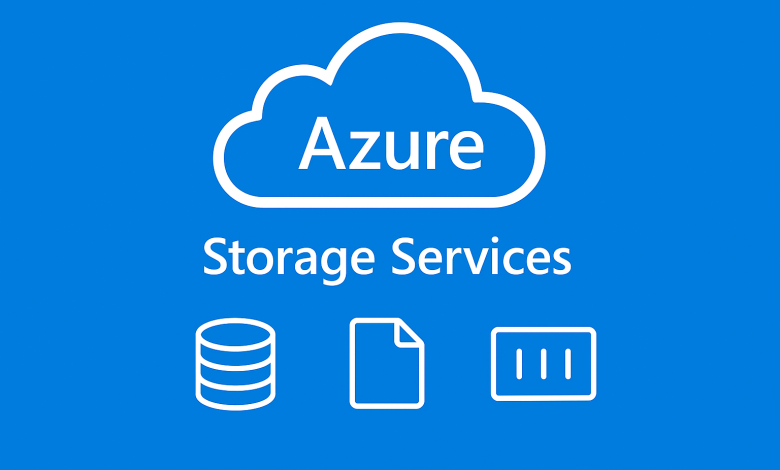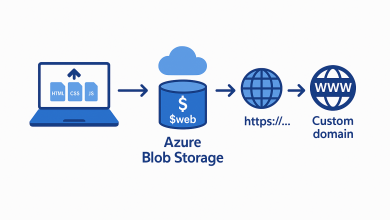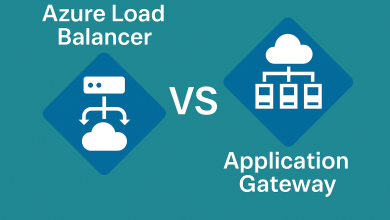A Complete Guide to Microsoft Azure Storage Services: Types, Features, and Best Practices

Cloud computing has transformed the way organizations store and access data. Microsoft Azure offers a wide range of storage solutions, each optimized for specific workloads. Below is a comprehensive guide to the main storage types in Azure, their features, and use cases.
1. Azure Blob Storage (Object Storage)
Azure Blob Storage is designed for massive amounts of unstructured data like images, videos, logs, and backups.
Tiers:
-
Hot: For frequently accessed data.
-
Cool: For infrequent access (30+ days).
-
Archive: Lowest cost, rarely accessed data with long retrieval time.
Best for: backups, big data analytics, media streaming, and archives.
2. Azure File Storage (SMB/NFS File Shares)
Azure Files provides fully managed file shares accessible via SMB or NFS protocols.
Key features:
-
Azure File Sync: cache files locally on-premises.
-
Identity-based authentication: integrates with Azure AD/AD DS.
Best for: lift-and-shift migrations, enterprise file shares, shared app data.
3. Azure Managed Disks (Block Storage)
Managed Disks provide durable, high-performance block-level storage for VMs and databases.
Types of disks:
-
Ultra Disk: extreme performance, tunable IOPS.
-
Premium SSD (v2 & v1): low latency, production databases.
-
Standard SSD: balanced performance/cost.
-
Standard HDD: cheapest, for infrequent access.
Best for: VM OS/data disks, SAP HANA, SQL Server, Oracle DB.
4. Azure Queue Storage
A message queue service that stores millions of small messages (up to 64 KB) for asynchronous communication.
Best for: background jobs, decoupling services, scalable distributed apps.
5. Azure Table Storage (NoSQL Store)
A schemaless key-value store for semi-structured data.
Best for: IoT device data, user profiles, metadata storage.
👉 For advanced scenarios, consider Azure Cosmos DB.
6. Azure Data Lake Storage Gen2 (ADLS Gen2)
A data lake built on Blob Storage with a hierarchical namespace for big data and analytics workloads.
Best for: integration with Azure Synapse, Databricks, and ETL pipelines.
7. Specialized Storage Options
-
Azure NetApp Files: enterprise-grade NFS/SMB for high-performance workloads.
-
Archive Storage: cheapest option for compliance/records with long retrieval times.
-
Elastic SAN: scalable block storage at SAN level.
8. Storage Redundancy Options
Azure replicates data to ensure durability and availability:
-
LRS: Locally Redundant Storage (within one datacenter).
-
ZRS: Zone-Redundant Storage (across zones in a region).
-
GRS: Geo-Redundant Storage (to a paired region).
-
RA-GRS: same as GRS + read access to secondary.
-
GZRS / RA-GZRS: geo + zone redundancy.
9. Security & Compliance Features
-
Encryption at rest: platform-managed or customer-managed keys.
-
Access control: Azure AD RBAC, Shared Access Signatures (SAS).
-
Private Endpoints: restrict traffic to Microsoft backbone.
-
Soft Delete & Versioning: protect against accidental deletion.
-
Immutable storage (WORM): regulatory compliance (legal hold, retention policies).
10. Cost Optimization
-
Pick the right tier (Hot/Cool/Archive).
-
Choose the right redundancy model (LRS vs GRS).
-
Use lifecycle policies to move cold data automatically.
-
Be mindful of egress charges for cross-region traffic.
11. Quick Decision Guide
-
Blob Storage → media, backups, logs.
-
File Storage → shared file systems, lift-and-shift.
-
Managed Disks → VMs and databases.
-
Queue Storage → async messaging.
-
Table Storage → lightweight NoSQL.
-
ADLS Gen2 → big data & analytics.
12. Example Scenarios
-
Web app with media: store in Blob + serve via CDN + lifecycle to Cool/Archive.
-
Enterprise file server: migrate to Azure Files + File Sync for local cache.
-
Analytics pipeline: ingest to ADLS Gen2 + process in Databricks/Synapse.
-
High-performance DB: use Premium/Ultra Managed Disks.
Conclusion
Microsoft Azure provides a rich portfolio of storage services covering every use case: unstructured data, shared files, block storage, messaging, analytics, and compliance. The key to success is matching each workload with the right storage option, redundancy, and cost tier.
By leveraging Azure’s storage capabilities effectively, organizations can achieve scalability, security, compliance, and cost efficiency in their cloud journey




